Prickly Pear Cactus Care: How to Grow These Iconic Paddle Cacti at Home
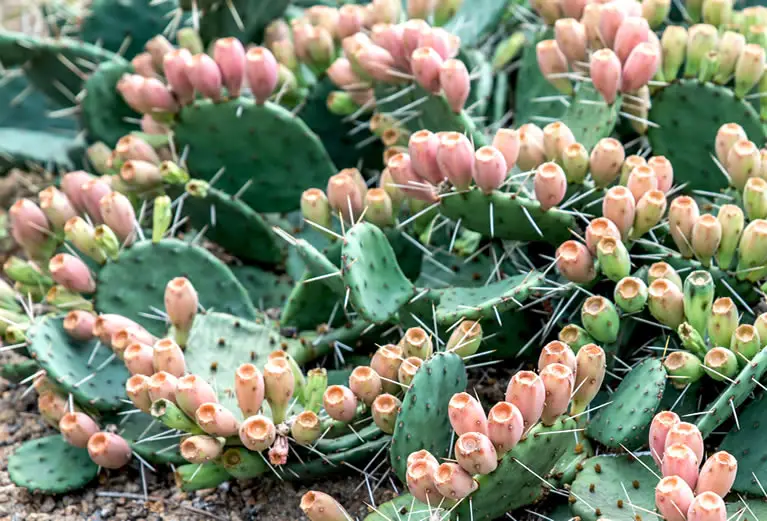
The Prickly Pear Cactus (Opuntia spp.) is one of the most recognizable and versatile members of the cactus family. Native to the Americas—especially arid regions of Mexico and the southwestern U.S.—this cactus is loved for its paddle-shaped segments, edible fruits (called “tunas”), and striking silhouette. With minimal care, it can thrive both indoors and outdoors.
Table of Contents
Best Light for Healthy Growth
Prickly pear cactus loves full sun.
Outdoors, it thrives in open spaces with 6–8 hours of sunlight daily.
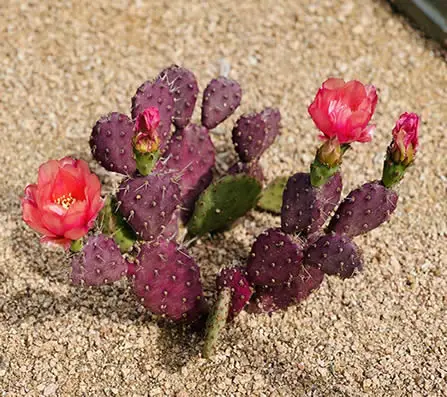
Indoors, place it near a south-facing window with unobstructed light.
If grown in lower light, expect slower growth and potential etiolation (stretching).
When and How to Water
This cactus is drought-tolerant and prefers to stay dry rather than wet.
Water deeply but infrequently during the growing season (spring through early fall).
Let the soil dry out completely between waterings.
In winter, cut watering down to once every 4–6 weeks or stop altogether.
Choosing the Right Soil
Use a fast-draining cactus mix, or blend regular potting soil with coarse sand and perlite in equal parts.
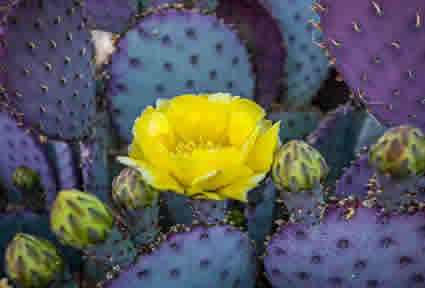
Avoid moisture-retentive soils, which can lead to root rot.
If growing outdoors, make sure the area drains well after rain.
Best Fertilizer for Opuntia
Fertilize once a month during the growing season using a cactus-specific blend with a low nitrogen ratio—like 2-7-7 like this one or 5-10-10 like this one.
Avoid high-nitrogen formulas, which can cause excessive, soft growth that’s more prone to rot.
Do not fertilize in winter.
Simple Pruning Tips
Pruning isn’t required, but it helps shape the plant and remove damaged pads.
Use tongs and gloves when handling to avoid injury from tiny spines (glochids).
Trim off pads at the joint with a clean, sharp knife, and allow cut surfaces to callous before watering.
Consider pruning your succulent so you can propagate new plants from it as outlined in our article How to Propagate Prickly Pear Cactus (Opuntia): Grow More of This Iconic Paddle Cactus.
Best Spot in the Home
Place your prickly pear cactus near a bright window where it won’t be brushed against accidentally.
It’s perfect for sunny sunrooms, dry-entryway displays, or bright studio corners with plenty of airflow.
Keep it away from high-traffic areas—those spines are no joke.
Outdoor Growing Tips
In USDA zones 8–11, prickly pears can be grown outdoors year-round.
Plant in full sun with sandy, gritty soil, and give each plant plenty of space.
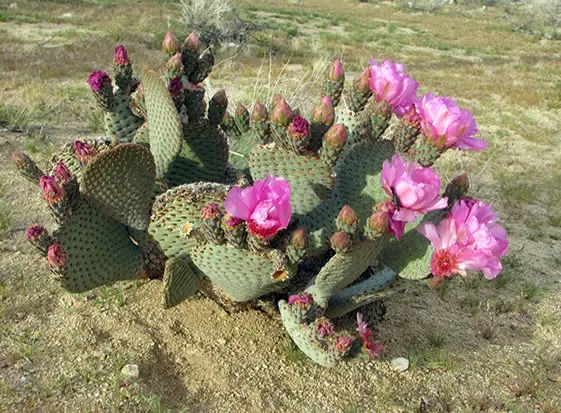
In cooler zones, grow it in containers and bring it indoors for winter.
Protect it from excessive rainfall and frost, especially young plants that haven’t hardened off.
Common Issues and How to Fix Them
Wrinkled or shriveled pads – Usually a sign of underwatering.
Give a deep soak, then resume your regular dry-down cycle.
Soft or discolored pads – Often due to overwatering or poor drainage.
Remove damaged areas and improve soil conditions.
Spots or fuzzy growths – May be signs of pests like scale, cochineal, or mealybugs.
Use a stiff brush or insecticidal soap.
Yellowing – Can be caused by too much shade or poor soil drainage.
Move to a brighter spot and check the roots if needed.
Popular Prickly Pear Varieties
Prickly pear cacti come in many colorful, sculptural, and even edible forms.
Here are some of the most popular varieties seen in gardens and on Pinterest:
-
Opuntia microdasys (‘Bunny Ears’) – Compact with fuzzy, pad-like ears and golden or white glochids instead of long spines.
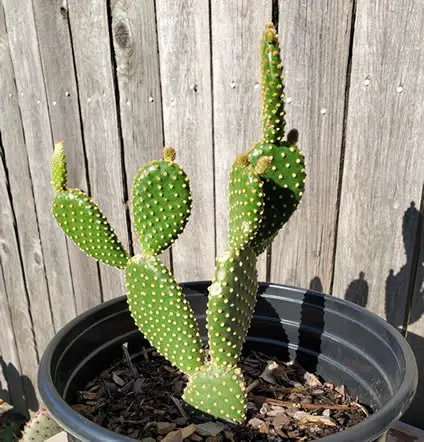
Bunny Ear Cactus (Opuntia microdasys) -
Opuntia ficus-indica – One of the most commonly cultivated varieties for edible pads (nopales) and fruits (tunas).
-
Opuntia humifusa – A cold-hardy variety native to the eastern U.S., often found in rock gardens.
-
Opuntia santa-rita (‘Santa Rita’) – Striking purple pads that deepen in color with cold or stress.
-
Opuntia engelmannii – Known for its large, round pads and bright yellow flowers in spring.
-
Opuntia basilaris (‘Beavertail Cactus’) – A low-growing variety with grayish pads and vivid magenta blooms.
-
Opuntia ‘Baby Rita’ – A dwarf version of Santa Rita with compact growth and lavender-hued pads.
All of these varieties follow similar care routines and bring their own visual charm to your collection.
Final Thoughts
The Prickly Pear Cactus is a sculptural showstopper with very few demands.
As long as it has light, warmth, and dry feet, it will thrive—and maybe even reward you with blooms or edible fruits.
With its variety of shapes and colors, there’s an Opuntia for every cactus lover, whether you’re keeping things compact indoors or going bold in the garden.
Thanks for reading! I'm Michael — houseplant fanatic and your Pinterest plant guide.
Follow me on Pinterest for fresh updates 🌿



